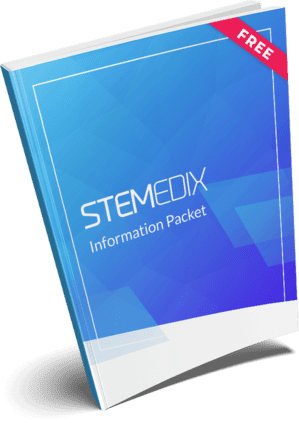Osteoarthritis (OA) is a prevalent and disabling joint condition that imposes significant health and economic burdens globally. Between 2006 and 2016, the global percentage change in years lived with disability due to OA increased by 31.5%. Knee osteoarthritis (KOA) is the most common form, primarily affecting older adults and those who are obese. Symptoms of KOA include pain, swelling, stiffness, and decreased mobility. KOA’s development involves more than just mechanical wear and tear. It is influenced by genetic and environmental factors, leading to the breakdown of articular cartilage, inflammation, and changes in the underlying bone.
Pathogenesis of KOA
The deterioration in KOA is complex. It begins with mechanical stress and progresses through a cascade of biological processes. Key players in cartilage maintenance are chondrocytes and the extracellular matrix (ECM). Chondrocytes, although only 2% of cartilage volume, are crucial and respond to inflammatory signals that disrupt the balance between ECM production and degradation, limiting cartilage regeneration.
Traditional treatments for KOA are primarily focused on pain management and symptomatic relief, with limited success in regenerating damaged cartilage.
Emerging Cell-Based Therapies For KOA
Mesenchymal Stromal Cells (MSCs) and Exosomes
Recent advances in cell-based therapy for KOA involve mesenchymal stromal cells (MSCs) and their secreted exosomes. MSCs are multipotent cells found in various tissues, including bone marrow, adipose tissue, and synovial fluid. They have the ability to differentiate into multiple cell types, including chondrocytes, and secrete exosomes that carry bioactive molecules.
MSC Selection and Preparation
MSCs can be derived from different sources, including bone marrow, adipose tissue, and umbilical cord tissue. Each source has unique properties and benefits. For instance, bone marrow-derived MSCs (BM-MSCs) are commonly used due to their extensive research background, while adipose tissue-derived MSCs (AT-MSCs) also show promising results.
Exosomes, extracellular vesicles released by MSCs, play a vital role in cell communication. They transfer lipids, nucleic acids, and proteins that can modulate cell behavior and promote cartilage repair.
Mechanisms of MSC-Based Therapy
Effects on Chondrocytes
MSC therapy promotes chondrocyte health by increasing chondrogenesis, improving cell proliferation, reducing apoptosis, and maintaining autophagy. MSCs stimulate chondrocyte activity through growth factors, enhancing their ability to regenerate cartilage. Studies show that MSCs and their exosomes can improve chondrocyte proliferation and reduce apoptosis, helping maintain cartilage integrity.
Impact on the ECM
Regulating the ECM’s balance between synthesis and breakdown is crucial for treating KOA. MSCs influence this balance by modulating matrix metalloproteinases (MMPs) and their inhibitors, tissue inhibitors of MMPs (TIMPs). For example, BM-MSCs can adjust the ratio of MMP-13 to TIMP-1, improving cartilage matrix composition.
Influence on Inflammation
Inflammation is a significant factor in KOA. MSCs and their exosomes can reduce pro-inflammatory cytokines (e.g., IL-1β, TNF-α) and enhance anti-inflammatory responses. This reduction in inflammation helps alleviate cartilage damage and improve joint function.
Immunomodulation
MSCs can modulate immune responses by influencing macrophage polarization. They can shift macrophages from a pro-inflammatory (M1) to an anti-inflammatory (M2) state, which helps reduce inflammation and promote tissue repair.
Mitochondrial Function
MSCs can also enhance mitochondrial function in chondrocytes. Mitochondrial transfer from MSCs to chondrocytes improves their energy production and reduces oxidative stress, which is crucial for maintaining cell function and delaying the progression of OA.
Paracrine Effects
The paracrine effects of MSCs, particularly through exosomes, involve the transfer of molecular signals to nearby cells. This signaling can promote cartilage repair and modulate inflammation and cell survival.
Overcoming Obstacles and Refining MSC Therapies for Better Outcomes
While MSC-based therapies show promise, there is a lack of standardized protocols for cell selection and preparation. Additionally, the exact mechanisms through which MSCs and exosomes exert their effects are still being studied. Xiang et al. call for further research to establish standardized methods and fully understand how these therapies work.
External physical conditions, such as hypoxia and magnetic fields, can affect MSC behavior and cartilage regeneration. Hypoxic conditions have been shown to enhance chondrogenesis, while magnetic fields can boost MSC differentiation and cartilage repair. Understanding these effects can improve treatment strategies.
Promising Advances in Cell-Based Therapies for Osteoarthritis Management
Osteoarthritis, particularly knee osteoarthritis, represents a major challenge due to its complex pathogenesis and significant impact on quality of life. Traditional treatments offer limited solutions for cartilage regeneration. However, advances in cell-based therapies, including MSCs and their exosomes, provide promising alternatives. These therapies work through various mechanisms, including enhancing chondrocyte function, modulating inflammation, and improving ECM balance. The authors conclude that ongoing research and standardization efforts will be crucial in optimizing these treatments and addressing the unmet needs in osteoarthritis management.
Source: Xiang, XN., Zhu, SY., He, HC. et al. Mesenchymal stromal cell-based therapy for cartilage regeneration in knee osteoarthritis. Stem Cell Res Ther 13, 14 (2022). https://doi.org/10.1186/s13287-021-02689-9


 St. Petersburg, Florida
St. Petersburg, Florida
